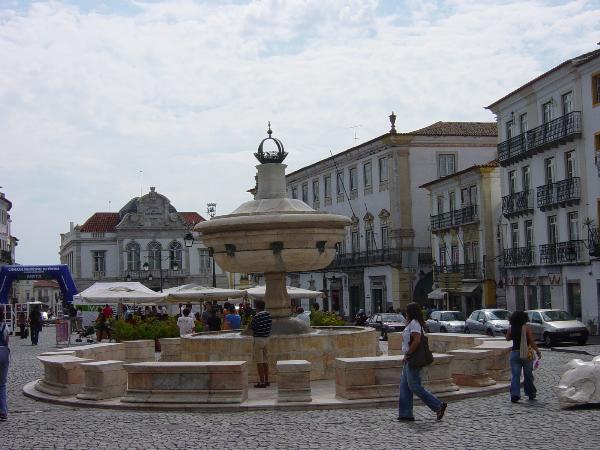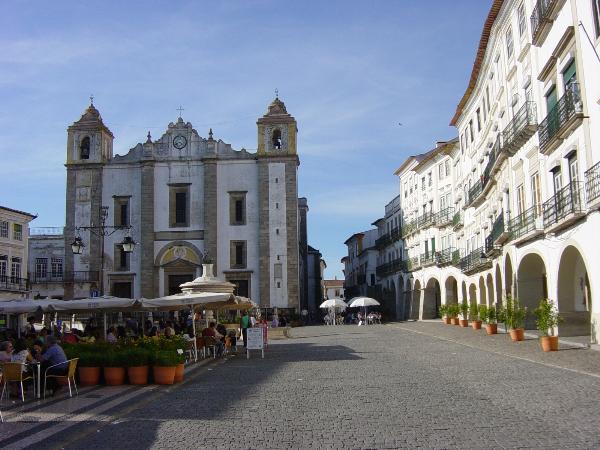Praça do Giraldo

Praça central da cidade histórica.
Centro urbano da cidade, onde se efectuaram, através dos séculos, as mais importantes solenidades profanas e religiosas. O rei D. Duarte instituiu no local o Paço dos Estaus (que mantém assinaláveis vestígios góticos) e se conservam, do século XVI, a Fonte Henriquina e a Igreja de Santo Antão, construções onde intervieram os arquitectos régios Miguel de Arruda, Manuel Pires e Afonso Álvares.
No templo, derradeiro exemplar da arte da Renascença em Évora, exibe-se um painel de pintura das Almas atribuído a Jerónimo Corte Real – o Vergílio Português, autor dos poemas épicos “O Segundo Cerco de Diu” e “Naufrágio de Sepúlveda” – o qual foi sepultado em Évora no dia 16 de Novembro de 1588.
Giraldo Square

Central Square inside the historical centre.
Center of the city, where, throughout the centuries, the most important secular and religious celebrations have taken place. In this square King D. Duarte built the Estaus Palace (which even today maintains its Gotic look), the Henriquina Fountain and St. Anton’s Church, from the 16th century, constructions where the Royal Architects Miguel de Arruda, Manuel Pires and Afonso Álvares contributed.
In the temple, of late Renaissance style, hangs painting of the Alms, attributed to Jerónimo Corte Real, the Portuguese Virgil. Corte Real was also the author of the epic poems “O Segundo Cerco de Diu” and “Naufrágio de Sepúlveda”. He was buried in Évora on November 16, 1588.
A cache
Colocada numa zona muito movimentada, é necessária descrição para retirar e recolocar sem dar nas vistas.
Devido à dimensão da cache, apenas existe um log book e uma stash note. Deve-se estar munido de um lápis ou esferográfica para fazer o registo.
Por favor, não tirem fotografias da cache.
The cache
Placed in a very busy area, it is necessary description to remove and replace the cache.
Due to the size of the cache, there is only a log book and a stash note. You should have a pencil or pen to make the regist.
Please, don't take pictures of the cache.

